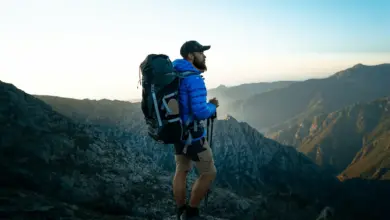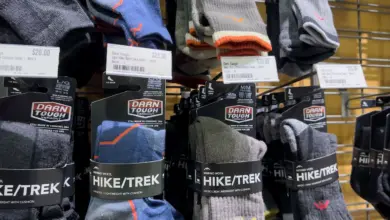How To Layer Clothing – A Complete Guide
How To Layer Clothing
Winter layers systems are done on both the upper and lower body. When done right, a good layering system will keep you dry and warm. Let’s take a look in further detail on how to add layers for winter.
1. Baselayer
The base layer is the first layer and is the layer that makes contact with your skin. Its purpose is to transfer moisture from your body to the outside of the material, where it can evaporate and keep you dry. It is important for the base layer to be snug and not restrict movement.
Winter base layers can be made from a few different types of materials:
Synthetic base layers vary from material to material, and do a good job of wicking away moisture while remaining breathable. These materials are also the fastest drying. One downside is that they will smell after a good hike.
Polyesters such as Polartec Power Dry or Patagonia Capilene are popular.
Cotton base layers tend to hold moisture, making them a bad candidate if you are active, in which case, are not recommended. Cotton can add a good amount of warmth, making it only a good choice if you are hanging around camp or sleeping.
Silk base layers aren’t the warmest or the fastest drying, but they do provide a lot of warmth for their thickness, and they feel nice. Silk is ideal for base layers that need to be in tighter-fitting clothing.
Merino wool base layers are made from an amazing material. Merino wool is very soft, effective at wicking away moisture, insulates well, and resists odors. It is a very popular choice for those who want to feel warm.
Popular brands include SmartWool, Ibex, and Icebreaker.
You may also like What Do I Need to Get Started Snowshoeing?
2. Insulation/middle layer
The insulation or middle layer is designed to hold in heat by trapping in air. Let’s take a look at the different kinds of insulation layers…
Fleece is often a good choice. It is lightweight, breathable, and insulated even when wet. They also dry faster and have a higher warmth-to-weight ratio than wool. Fleece can also be relatively cheap. One drawback is that it does not typically insulate from wind unless you buy a wind-resistant model.
WindStopper EMS Divergence
Polartec WindPro® polyester or Gore WindStopper
Polartec® Power Stretch® or Techwick Thermo
Merino wool sweaters are another option and offer great benefits such as good insulation, comfort, breathability, and odor resistance.
Down is another natural material, and one of the warmest materials. It does lose its insulation ability when it gets wet, however, there is such a thing as water resistance down on the market.
Examples: For high-energy activities such as cross-country skiing, cycling, or running, choose lightweight fleece (Polartec 100 or Power Dry) to avoid overheating. For cold conditions, try thicker fleece such as Polartec 200 or 300.
You may also like How to Prevent and Treat Frostbite When Hiking
3. Outer layer /shell
The shell is the outermost layer that is designed to protect you against the elements, such as wind snow, and rain. Having the right shell in bad weather can literally save your life. While it is pouring rain and windy, a shell will keep you dry and warm.
Shells can be classified into hard shells and soft shells. While there is no specific standard, there are general differences between these types of shells.
Hard shells
Hard shells are usually known to be water and windproof. They are made from a “harder” material and are less breathable. If you are active and become overheated, it’s not uncommon for condensation to build up on the inside of the shell. For these reasons, hard shells are preferred in harsh weather.
Soft shells
Soft shells tend to be more comfortable, breathable, and warm. The fabric is stretchy, making them easier to move in. They are usually water resistant, but not typically wind and waterproof. Soft shells are better suited for hiking in milder weather, where ventilation is a higher priority. If however you are hiking in severe weather, a hard shell may be preferred.
Consider the following features when looking to purchase a shell:
- Treated with durable water repellent (DWR) Which makes water roll off the fabric instead of being absorbed.
- Drawstrings at the waist and hood (hoods are usually on hard shells)
- Zipper under the armpits (pit zips) for extra ventilation
- Large enough to cover multiple layers of clothing
- Inside pockets hold Items and food close to your body, preventing them from freezing



